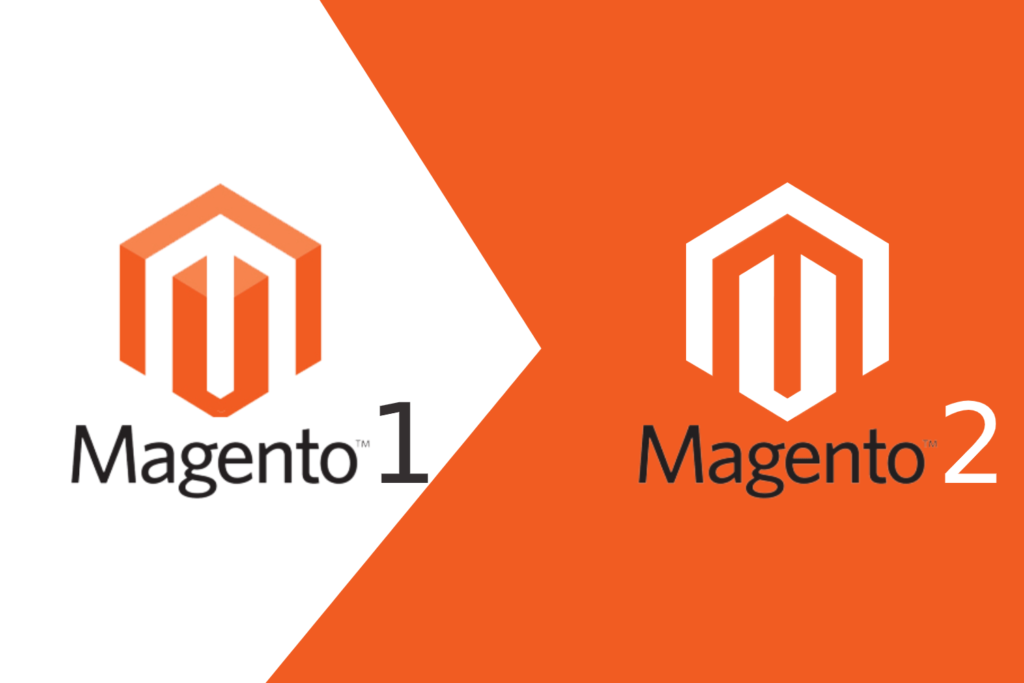According to recent research conducted by Zest Logic in late 2024, 14% of active e-stores are still running on Magento 1, while the remaining 86% have moved to Magento 2 or Adobe Commerce. Despite Magento 1 reaching its end-of-life in June 2020, thousands of businesses continue to rely on this outdated platform. Many owners hesitate to migrate due to concerns over costs, downtime, or the perceived complexity of the process. However, the reality is that staying on Magento 1 poses far greater risks than migrating to Magento 2.
Delaying migration can lead to serious security vulnerabilities, performance issues, and rising maintenance costs. In fact, maintaining an unsupported Magento 1 store often ends up costing more over time due to expensive custom fixes, security patches, and hosting inefficiencies. On top of that, your customers may suffer from poor website performance and outdated features, leading to lost revenue.
How Seriously is Magento 1 Outdated? (Spoiler: Very!)
Magento 1 was once the go-to platform for countless e-commerce businesses, but that ship sailed back in June 2020 when it officially reached its end-of-life. While some businesses are still clinging to the outdated platform, the reality is that continuing to use Magento 1 comes with major risks. Security vulnerabilities, lack of support, and outdated features make it feel like running a modern store on a flip phone.
Magento 1 End-of-Life (EOL) and What It Means
Magento 1 was launched back in 2008, and for over a decade, it served as a reliable foundation for e-commerce businesses worldwide. However, as technology evolved and customer expectations grew, the platform started to show its age. In June 2020, Adobe officially ended support for Magento 1, marking the end of an era for the platform. This End-of-Life (EOL) decision meant no more security updates, no bug fixes, and no official support, leaving stores on Magento 1 vulnerable to cyberattacks and operational issues.

The introduction of Magento 2 in 2015 was a strategic move to address the limitations of Magento 1 and provide a more modern, scalable, and secure solution. Magento 2 was designed to support faster load times, improved scalability, and a better user experience for both merchants and customers. Businesses that have migrated to Magento 2 not only gain access to advanced features but also avoid the mounting risks associated with running outdated software.
Why Magento 2 Was Necessary
Performance and Scalability Issues
Magento 1 struggled with slow load times and poor scalability, especially for large, high-traffic stores. Magento 2 introduced better caching (like Varnish) and a streamlined database for faster performance.
Outdated Technology Stack
Magento 1 relied on older tools like PHP 5.x, which lacked modern features. Magento 2 upgraded to a current stack, including support for PHP 7/8 and modern development tools like Composer.
Customization Challenges
Magento 1’s monolithic architecture made customizations messy and prone to conflicts. Magento 2’s modular design allows developers to work on individual components without disrupting the entire system.
Lack of Mobile Optimization
With e-commerce shifting to mobile, Magento 1 couldn’t deliver a smooth experience. Magento 2 brought responsive design themes and better mobile performance.
Admin Panel Limitations
Magento 1’s admin interface was outdated and clunky. Magento 2 introduced a more intuitive admin panel, featuring drag-and-drop tools and easier product management.
Security Vulnerabilities
Without regular updates, Magento 1 became prone to security breaches. Magento 2 improved security with better password hashing, built-in fraud protection, and consistent updates.
Fewer Built-In Features
Magento 1 relied heavily on extensions, which often caused compatibility issues. Magento 2 offers built-in features like Elasticsearch, Varnish caching, and payment gateway integrations for a smoother experience.
How Serious Are Magento 1 Security Risks?
No Security Patches Since 2020
Magento 1 stopped receiving security updates after its end-of-life in June 2020, leaving businesses exposed to known vulnerabilities. Cybercriminals often exploit these unpatched weaknesses, targeting sensitive customer data such as credit card information. In fact, studies have shown that over 62% of data breaches involve vulnerabilities for which a patch was already available.
Increased Risk of Malware and Hacking
Outdated systems like Magento 1 are prime targets for attacks, such as card skimming malware and SQL injection. One notable example is the Magecart attacks, where hackers inject malicious scripts to steal payment data during checkout. Without the advanced protections Magento 2 offers, businesses on Magento 1 are at a much higher risk of being compromised.
Compliance Issues with Industry Standards
Magento 1 businesses may fail to meet PCI DSS compliance (required for handling credit card transactions), as it’s impossible to ensure the security of unpatched software. Non-compliance can lead to fines, loss of payment processing capabilities, or even legal action.
Third-Party Extension Vulnerabilities
Magento 1 relies heavily on third-party extensions, many of which are no longer updated or supported. These extensions often introduce new vulnerabilities, creating additional entry points for attackers. This is a stark contrast to Magento 2, where security measures are baked into the core platform.
Real-World Impacts of a Breach
The consequences of a security breach go beyond financial losses. In 2023 alone, the average cost of a data breach reached $4.45 million globally, according to IBM. Businesses can also suffer long-term damage to their reputation, loss of customer trust, and potential legal liability—risks that Magento 1 users face daily.
Key Benefits of Migrating to Magento 2
Magento 2 isn’t just an upgrade; it’s a business growth engine. Stores that migrate report a 50% faster load time and a 30% increase in conversions, thanks to better performance and features tailored for today’s e-commerce demands. If you’re still on Magento 1, you’re not just missing out—you’re falling behind.
Performance That Impacts Your Bottom Line:
Magento 2’s optimized architecture delivers page load speeds under 2 seconds, reducing bounce rates and keeping customers engaged. Compare that to Magento 1, which often struggles to meet modern expectations.
Built-In Scalability for Growing Businesses:
With Magento 2, your store can handle 250,000 products and thousands of transactions per hour without breaking a sweat, a task that puts Magento 1 under strain.
Seamless Mobile Experience:
Research shows 79% of smartphone users have made a purchase online in the last six months. Magento 2 is fully responsive, ensuring mobile shoppers enjoy a smooth experience—something Magento 1 struggles to achieve.
Cost-Efficiency Over Time:
While migration may seem costly upfront, the long-term savings are significant. You’ll spend less on maintenance, custom patches, and troubleshooting that plague Magento 1 users.
Comparing Magento 2 and Magento 1
| Feature | Magento 1 | Magento 2 |
|---|---|---|
| Performance | Page load times: Typically 3-5 seconds or more with large catalogs. | Page load times: Under 2 seconds with optimized caching and PHP 7. |
| Architecture | Built on PHP 5.x, which is outdated and less scalable. | Built on PHP 7, offering 2-3x better performance and improved scalability. |
| Admin Panel | Less intuitive, harder to navigate and use. | Streamlined UI, with up to 30% faster admin panel load times and customizable dashboards. |
| Mobile Optimization | Requires third-party customization for mobile responsiveness. | Fully mobile-responsive and optimized for mobile-first design, with a 50% faster mobile page load speed compared to Magento 1. |
| SEO Features | Basic SEO tools; limited customization for meta tags and URL structures. | Enhanced SEO tools with improved meta tag management, URL rewrites, and better structured data (up to 20% improvement in SEO performance). |
| Security | No official support since June 2020, security patches are harder to manage. | Regular security updates, with built-in features like two-factor authentication and PCI DSS compliance. |
| Reporting & Analytics | Basic reporting, with limited customization and slower data processing. | Advanced reporting tools, including real-time insights and up to 50% faster data processing and customizable reports. |
| Customer Experience | Slower checkout process, basic customer management features. | Faster 1-page checkout, improved customer experience with a 30% lower cart abandonment rate. |
| Payment Options | Limited integration with payment gateways; slower transaction processing. | Out-of-the-box support for 60+ payment gateways and faster transaction speeds (up to 40% quicker transactions). |
Magento 2 brings a whole new level of functionality, performance, and user experience compared to its predecessor. While Magento 1 has been a reliable platform, it’s now starting to show its age, especially with new technological advancements. Moving to Magento 2 offers a substantial upgrade in speed, security, and scalability. In this section, we’ll explore the key differences and how Magento 2 can give your business the edge it needs to thrive.
Differences in Architecture and Technology
Magento 2 introduces a modern tech stack with improvements in performance and efficiency. It leverages PHP 7, which significantly enhances speed, providing a faster, more responsive experience for users. Additionally, Magento 2 uses Composer, a tool that allows for easier dependency management and better integration with other technologies, making updates smoother.
On the other hand, Magento 1’s older architecture, based on PHP 5, can be sluggish and difficult to maintain. With Magento 2, developers can enjoy a more modular framework that simplifies development processes and allows for faster deployments. These advancements in architecture ensure that Magento 2 is future-proof, enabling your store to scale efficiently as your business grows.
Improved Admin and Developer Experience
Magento 2’s redesigned admin panel provides a cleaner, more intuitive interface, streamlining daily operations for store owners and admins. It offers customizable dashboards, advanced search filters, and a smoother workflow to save time and enhance productivity. For developers, the new architecture includes better modularity, faster deployment, and improved performance monitoring tools. These improvements ensure a more efficient experience for both store managers and technical teams.
SEO and Mobile Optimization
Magento 2 is designed with SEO and mobile-first in mind, offering numerous benefits over Magento 1. The platform’s modern codebase ensures faster load times, improved mobile performance, and better compatibility with search engine algorithms. These improvements directly impact your store's visibility and user experience, leading to higher rankings and more conversions.
- Faster Load Times: Magento 2’s enhanced performance ensures quicker page loading, reducing bounce rates and improving SEO rankings.
- Mobile Responsiveness: The platform’s mobile-friendly design offers a smoother experience for mobile users, crucial for today’s shoppers.
- Better SEO Features: Built-in SEO tools help you optimize meta tags, URL structures, and product pages with ease.
Enhanced Reporting and Analytics
Magento 2 comes with advanced reporting features that give you deeper insights into your business operations. You can access real-time data, including sales performance, customer behavior, and product performance, all in one place. This empowers business owners to make informed decisions that drive growth and profitability.
Additionally, Magento 2 allows for customized reports, helping you analyze specific metrics that are most important to your business. With enhanced data visualizations and integrations with other analytics tools, you can track KPIs and optimize strategies more effectively than ever before.
How to Successfully Migrate from Magento 1 to Magento 2
Migrating from Magento 1 to Magento 2 can seem like a daunting task, but breaking it down into manageable steps can make it easier. It's not just about upgrading your platform—it’s about making sure your business keeps running smoothly throughout the transition. We won’t dive into a detailed, technical migration plan for developers, but instead, we’ll outline the process from an eCommerce owner and manager’s perspective.
Step-by-Step Migration Process
Migrating to Magento 2 requires careful planning to ensure data integrity and smooth operation. It's important to approach it in stages, with testing done at every step to avoid disruptions. Here's a quick overview of the key steps involved:
- Planning and Strategy: Assess your needs, define goals, and prepare a migration plan.
- Data Migration: Migrate product data, customer data, and order histories.
- Testing: Perform extensive testing of the site’s functionality, payment gateways, and integrations.
- Deployment: Launch the site and monitor for any issues during the transition.
Challenges to Expect During Migration
Though migration can be smooth with proper planning, it’s important to be aware of potential challenges. These hurdles often come from data migration, customization needs, or compatibility issues with existing extensions. Here are a few common problems:
- Data Migration Issues: Difficulty in transferring product and customer data correctly.
- Extension Compatibility: Third-party extensions on Magento 1 might not work seamlessly on Magento 2.
- Design and Layout Differences: The look and feel of the new site might require adjustments.
- Downtime Risks: Planning for minimal downtime during the transition to avoid lost sales.
Post-Migration Checklist
Once your Magento 2 site is live, it’s crucial to ensure everything is functioning properly. A post-migration checklist helps verify that the migration was successful and that the store operates smoothly. Here's what to check after migration:
- Performance Testing: Check load speed and performance across devices.
- Functionality Test: Ensure all features (like payment gateways, checkout, and customer login) are working properly.
- SEO Review: Verify that SEO settings (URLs, meta descriptions, etc.) are correctly implemented.
- Security Check: Ensure that the new platform is secure, with the latest patches applied.
By following these steps, you'll ensure a smooth migration to Magento 2 and minimize the risk of disruptions to your business.
Conclusion
Magento 2 offers significant benefits for businesses, such as faster load times, enhanced security, and the ability to scale as your eCommerce store grows. Its user-friendly admin interface and advanced features make managing and optimizing your store more efficient. With built-in mobile optimization, Magento 2 helps you cater to the growing number of mobile shoppers. Overall, migrating to Magento 2 will improve your site’s performance and ensure you're ready for the future of eCommerce.
On the other hand, staying on Magento 1 comes with several risks that can hinder business growth. As Magento 1 is no longer supported with security updates or bug fixes, your site becomes vulnerable to security breaches and potential data loss. Additionally, the performance of Magento 1 may not meet the demands of today’s online shopping experience, leading to slow load times and a poor user experience. Over time, continuing with Magento 1 will likely result in higher maintenance costs and lost opportunities due to outdated technology.



